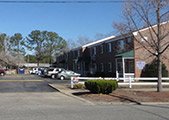Apartment Loan
Multifamily loans, also appertained to as apartment loans, have traditionally constituted the largest portion of our total business volume. We're experts in securing apartment loans and mixed-use mortgages.
[table id=2 /]Our Apartment Loan Benefits.Apartment Loan rates start as low as 4.99.A marketable mortgage broker with over 30 times of lending experience• No outspoken operation or processing freights• Simplified operation process• Backing up to 80 LTV• Terms and amortizations up to 30 times• Long-term fixed rates• Loans for purchase and refinance, including cash-eschewal• 24-hour written approvals with no cost and no obligation
LOAN TYPES
- Apartment Loans
- Business Real Estate Loans
- CMBS Loans
- Commercial Real Estate Loans
- Fannie Mae Multifamily Loan
- FHA Multifamily Loans
- Freddie Mac Multifamily Loan Rates
- Freddie Mac SBL Multifamily Loans
- HUD Multifamily Loans
- Investment Property Loans
Apartment FinancingBasics of Apartment Loans Whether you're seeking funding for a small apartment building, a large complex with hundreds of units, or a cooperative requiring an underlying mortgage, we can assist you in finding the ideal financing solution to meet your apartment loan requirements. Our company has access to a range of capital sources, including Fannie Mae, Freddie Mac, HUD, various local and national banks, Wall Street conduit lenders, agency lenders, credit unions, and insurance companies. We cater to multifamily loan requests of all sizes, starting from $1,000,000. Our financing services cover the following property types:
- Large urban high-rise apartment buildings
- Owner-occupied multifamily properties
- Suburban garden apartment complexes
- Small apartment buildings comprising 5+ units
- Cooperative apartment building loans
- Portfolios of small apartment properties and/or single-family rental properties
- Other multifamily and mixed-use properties We collaborate with multiple capital sources and multifamily lenders, including Fannie Mae, Freddie Mac, FHA, national banks, regional and local banks, insurance companies, Wall Street conduit lenders, credit unions, and private lenders. Our apartment loans are available in various areas, whether you're purchasing or refinancing. We are equipped with the right solutions for your needs, regardless of the loan size. Get started with a free loan quote today.
Apartment Lending Outlook for 2023:The apartment market has been one of the strongest performers in the commercial real estate sector for an extended period. The consistent demand for apartment housing has driven its growth, as the need for housing remains high. However, the market is now experiencing a slowdown due to inflation and interest rate hikes by the Federal Reserve. Slower hiring rates and a decrease in household formation are further contributing to the sector's deceleration. Additionally, the completion of new construction projects from the past year or two coincides with a weakening overall demand. As a result, we anticipate higher vacancy rates and slower rent growth. On the other hand, the increased costs of single-family homes and higher interest rates may keep more potential homebuyers in the rental market, which could help alleviate some of the slowdowns in the apartment sector. During the pandemic, many urban renters relocated to warmer regions in the Sun Belt, resulting in explosive growth and substantial rent increases in those cities. However, this trend is not expected to continue in 2023. Higher interest rates and living expenses might prompt some renters to move from more expensive markets to more affordable rural or tertiary markets. Affordable housing is a major topic of interest this year, with President Biden's Housing Supply Action Plan aiming to address the country's affordability concerns.Economic Outlook for 2023:The national economy has made a strong recovery over the past two years following the Covid pandemic. However, aggressive government spending has led to rampant inflation. To counter this, the Federal Reserve has taken decisive action by raising short-term rates. Consequently, US Treasury rates have surged, resulting in increased commercial mortgage rates. Employers are responding to rising costs by reducing staff levels, which we expect to contribute to net job losses and higher unemployment in 2023. These factors are likely to slow wage growth as well. If the economy enters a recession, the labor market could contract significantly. Uncertain economic trends and higher expenses are slowing household formation rates after the high levels seen in 2021 and the beginning of 2022. Residential mortgage rates are also expected to slow the single-family home market, leading more families to choose to rent in apartment buildings. While fuel costs have decreased in 2022, ongoing conflicts and production cutbacks may place upward pressure on these expenses. Higher interest rates could lead to a decline in residential and commercial real estate values, reducing sales activity.Capital Markets Outlook for 2023 :In May 2022, the Federal Reserve's Open Market Committee began aggressively raising short-term interest rates in response to high inflation rates. These rate hikes, the fastest in over 40 years, have created turmoil in the markets as borrowers and lenders adapt to new realities. The market will continue to be affected by slower rate increases in 2023 as the Federal Reserve aims to lower inflation without causing a recession. Higher interest rates compel commercial property owners to allocate more cash flow toward debt payments, impacting the overall profitability of their properties. Lenders have become more cautious, leading to lower leverage rates and tighter credit criteria. Average loan-to-value rates have decreased, and there is a mismatch between sellers' property valuations and buyers' offers, resulting in a slowdown in sales activity. Agency lenders, such as Fannie Mae and Freddie Mac, have seen a decline in overall deal volume and are focusing on financing apartment properties that meet affordability requirements. New apartment construction has decreased due to higher material costs and borrowing expenses, reducing the attractiveness of new projects. With most apartment leases lasting one year, landlords find it easier to implement rent increases, contributing to the sector's overall stability.Investment Outlook for 2023 :Apartment properties have experienced consistently lower capitalization rates as prices surged. However, the Federal Reserve's interest rate hikes are causing cap rates to rise and slowing or reducing price appreciation. Escalating fuel and building supply costs are further eroding cash flow and exerting downward pressure on prices. Many apartment investors are adopting a defensive stance in 2023 due to a weak economic outlook and market uncertainties. Although sales activity is expected to decline overall, the apartment market remains healthier compared to other segments of commercial real estate. The European Central Bank's less aggressive approach has resulted in a drop in the euro's value against the US dollar, potentially leading to increased European investment in dollar-denominated assets like US commercial real estate. Higher living costs and tightening cap rates in primary markets are causing investors to shift their attention and assets toward smaller or tertiary markets. Investors are seeking opportunities in evolving markets, such as those near new transportation sources, upcoming stadium constructions, or neighborhoods undergoing revitalization.Housing Outlook for 2023:Elevated housing prices and higher home interest rates have discouraged many potential homebuyers, leading them to continue renting apartments instead. Residential home listings are currently below average levels and are expected to remain low throughout the year. Economic concerns and reduced hiring levels are dissuading many first-time buyers from transitioning to homeownership. The combination of higher living costs, increased interest rates, and job uncertainty is prompting many millennials and Gen Z renters to prolong their stay in the rental market. Rental apartments have become more attractive due to the cost difference between owning and renting, which now exceeds an average of $2500 per month. One notable trend since the pandemic's onset is the migration of people from northern urban markets to Sun Belt locations, and this trend is expected to continue. Another trend is the preference of individuals, who had initially intended to purchase a single-family home, to opt for renting a home instead. These individuals are looking to move away from apartments but are not yet ready to commit to homeownership. Unless prices decrease or rates ease, this trend is likely to persist.
FHA 223(f) Multifamily Loan Program
 The FHA 223(f) multifamily loan program is designed to assist investors in purchasing and refinancing multifamily properties. While some may believe that HUD only insures affordable and Section 8 housing, the truth is that the HUD 223(f) loan program is an excellent choice for financing various types of multifamily properties across the United States. As one of the best financing options in the market for multifamily investors, the FHA 223(f) multifamily loan insurance program provides exceptional benefits.
The FHA 223(f) multifamily loan program is designed to assist investors in purchasing and refinancing multifamily properties. While some may believe that HUD only insures affordable and Section 8 housing, the truth is that the HUD 223(f) loan program is an excellent choice for financing various types of multifamily properties across the United States. As one of the best financing options in the market for multifamily investors, the FHA 223(f) multifamily loan insurance program provides exceptional benefits.
Mortgage Insurance Premium (MIP)
 There is a common misconception in the multifamily industry that FHA directly provides multifamily loans to developers and real estate investors. In reality, these loans are actually originated by third-party lenders, while the FHA's role is to underwrite and insure them. This is where the mortgage insurance premium comes into play. All FHA borrowers are required to pay a mortgage insurance premium at the time of closing and annually thereafter. Typically, borrowers pay 1% of the loan amount to the FHA at closing and 0.6% annually thereafter. However, there are MIP discounts available for affordable properties and green properties. Affordable and subsidized properties are eligible for discounts ranging from 0.25% to 0.35%, while Green/Energy Star certified properties receive a discount of 0.25%. The FHA collects these premiums and utilizes them to insure the loans issued by third-party lenders. In the event that a borrower defaults on a loan, the FHA uses the collected premiums to reimburse the third-party lender. Essentially, the mortgage insurance premium paid to the FHA enables these loans to be offered at attractive rates with extended terms and amortization periods.
There is a common misconception in the multifamily industry that FHA directly provides multifamily loans to developers and real estate investors. In reality, these loans are actually originated by third-party lenders, while the FHA's role is to underwrite and insure them. This is where the mortgage insurance premium comes into play. All FHA borrowers are required to pay a mortgage insurance premium at the time of closing and annually thereafter. Typically, borrowers pay 1% of the loan amount to the FHA at closing and 0.6% annually thereafter. However, there are MIP discounts available for affordable properties and green properties. Affordable and subsidized properties are eligible for discounts ranging from 0.25% to 0.35%, while Green/Energy Star certified properties receive a discount of 0.25%. The FHA collects these premiums and utilizes them to insure the loans issued by third-party lenders. In the event that a borrower defaults on a loan, the FHA uses the collected premiums to reimburse the third-party lender. Essentially, the mortgage insurance premium paid to the FHA enables these loans to be offered at attractive rates with extended terms and amortization periods.
2023 FHA Multifamily Loan Statistics
 In 2023, the FHA provided insurance for approximately 1,800 loans, totalling over $29 billion, catering to commercial real estate investors and developers. These loans were extended for multifamily and healthcare properties across the United States. The FHA implemented several new policies that enhanced the appeal of their loan insurance programs for investors.Previously, the FHA mandated that developers of newly constructed apartment buildings wait a minimum of three years before becoming eligible to refinance their properties with FHA-insured loans. However, in 2020, the FHA eliminated this requirement, allowing developers to refinance their properties immediately upon stabilization. This policy change was widely embraced by developers in 2023, contributing to the FHA's achievement of record loan volumes year after year.Furthermore, the FHA started permitting investors to acquire multifamily properties through bridge loans while still qualifying for up to 85% loan-to-value (LTV) through the 223(f) program. This was highly advantageous for investors since the FHA loan process typically takes more than six months to complete. Most sellers are unwilling to wait that long for the sale to close. With this policy change, investors were able to purchase multifamily properties using short-term bridge loans and later transition into FHA loans after the initial acquisition. Many real estate investors capitalized on this policy modification in 2023, further contributing to the FHA's record loan volumes.Due to historically low interest rates and the aforementioned policy changes, the FHA experienced a significantly high level of activity throughout 2023. The loan approval and closing process often extended beyond 10 months as FHA offices across the country dealt with a backlog of deals amounting to billions of dollars. Many investors took advantage of the favourable low-rate environment by securing long-term fixed rates below 3%. As a result of these factors, the FHA captured a substantial share of the multifamily loan market in 2023.
In 2023, the FHA provided insurance for approximately 1,800 loans, totalling over $29 billion, catering to commercial real estate investors and developers. These loans were extended for multifamily and healthcare properties across the United States. The FHA implemented several new policies that enhanced the appeal of their loan insurance programs for investors.Previously, the FHA mandated that developers of newly constructed apartment buildings wait a minimum of three years before becoming eligible to refinance their properties with FHA-insured loans. However, in 2020, the FHA eliminated this requirement, allowing developers to refinance their properties immediately upon stabilization. This policy change was widely embraced by developers in 2023, contributing to the FHA's achievement of record loan volumes year after year.Furthermore, the FHA started permitting investors to acquire multifamily properties through bridge loans while still qualifying for up to 85% loan-to-value (LTV) through the 223(f) program. This was highly advantageous for investors since the FHA loan process typically takes more than six months to complete. Most sellers are unwilling to wait that long for the sale to close. With this policy change, investors were able to purchase multifamily properties using short-term bridge loans and later transition into FHA loans after the initial acquisition. Many real estate investors capitalized on this policy modification in 2023, further contributing to the FHA's record loan volumes.Due to historically low interest rates and the aforementioned policy changes, the FHA experienced a significantly high level of activity throughout 2023. The loan approval and closing process often extended beyond 10 months as FHA offices across the country dealt with a backlog of deals amounting to billions of dollars. Many investors took advantage of the favourable low-rate environment by securing long-term fixed rates below 3%. As a result of these factors, the FHA captured a substantial share of the multifamily loan market in 2023.